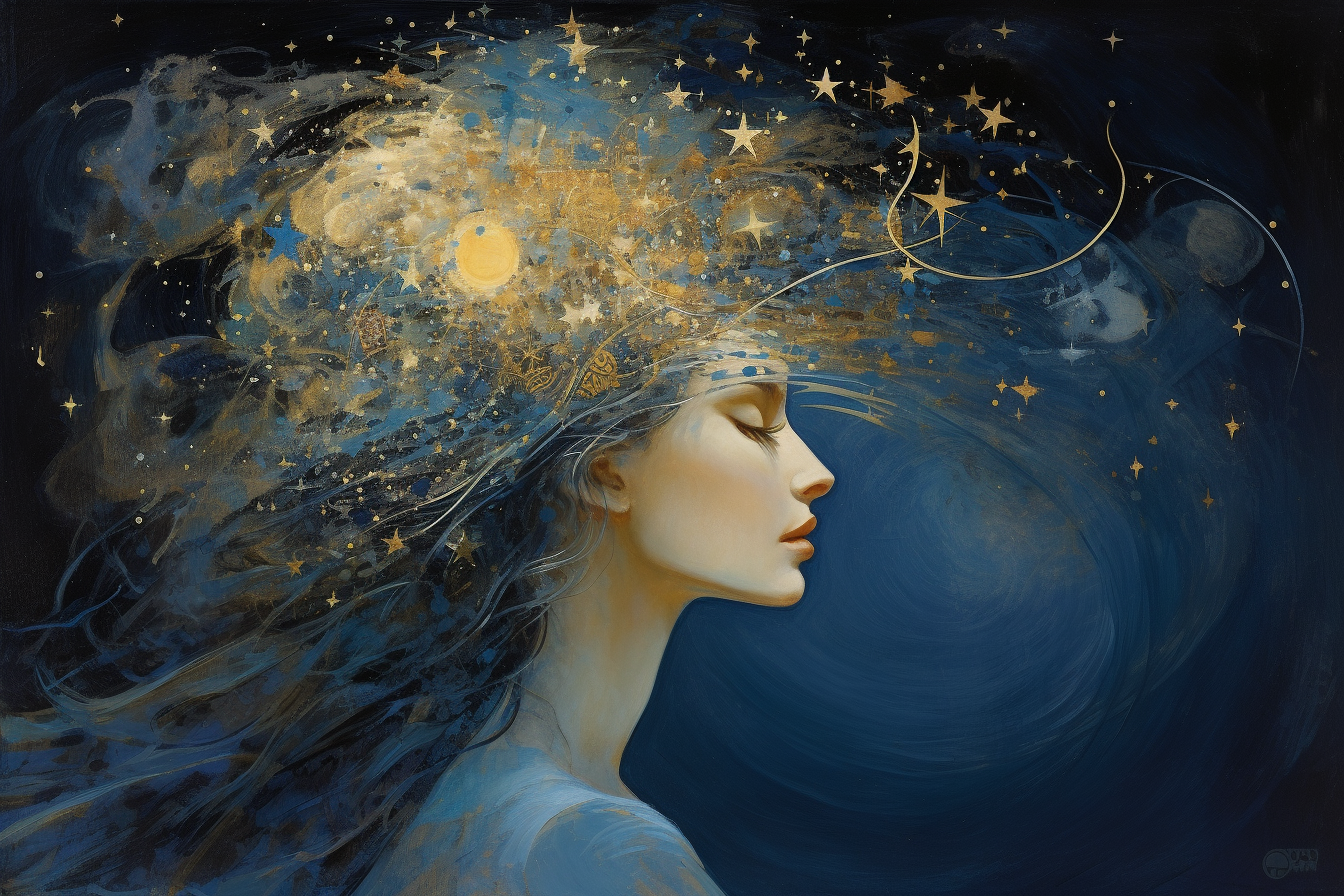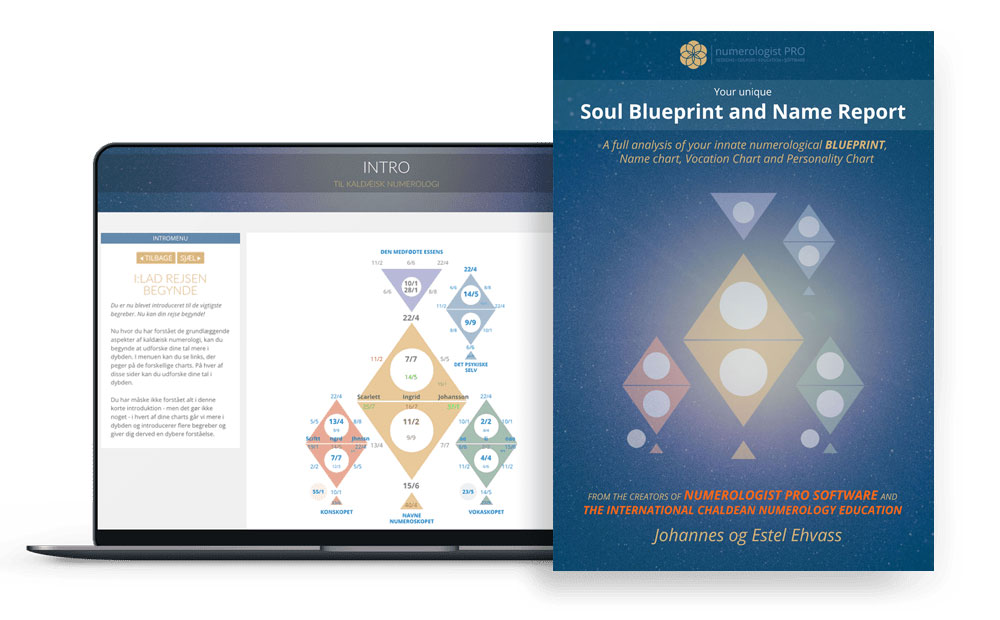Astrology in the 20th Century: A Modern Renaissance

Johannes Ehvass
Welcome, dear reader! The Enlightenment, often hailed as the Age of Reason, ushered in an era where logic and empirical evidence reigned supreme. As society championed scientific discovery and rational thought, astrology faced a unique challenge. Positioned at the intersection of ancient beliefs and emerging skepticism, the celestial practice found itself both critiqued and revisited. Yet, even amidst this intellectual revolution, the allure of the stars persisted, reflecting the enduring human desire to find meaning beyond the tangible. Join me as we explore this dynamic period, where astrology navigated the delicate balance between tradition and transformation.
The Resurgence of Popular Astrology
Introduction: The Astrological Revival
Setting the Stage

The 20th century marked a profound shift in the world’s approach to astrology. This ancient practice, which had seen its share of peaks and troughs throughout history, began to experience a surge in popularity as the century unfolded. But what fueled this revival?
Modern Times, Ancient Wisdom
The tumultuous backdrop of the 20th century—a period characterized by rapid technological advancements, two world wars, the rise and fall of empires, and profound societal transformations—created an atmosphere conducive to seeking solace in the mysteries of the cosmos.
The Cultural Revolution and the New Age Movement
The Counterculture of the 1960s and 1970s
The 1960s and 1970s saw a significant pushback against mainstream societal norms. With the birth of the counterculture and the New Age movement, there was an increased interest in spirituality, mysticism, and alternative ways of thinking, setting the stage for astrology’s resurgence.
The Holistic Approach: Mind, Body, Spirit
The New Age movement brought forth a more integrative view of the individual, seeing the connection between mind, body, and spirit. Astrology, offering insight into a person’s innate tendencies, desires, and life path, fit seamlessly into this paradigm.
Modern Media and the Dissemination of Astrological Knowledge
Print Media: Horoscopes and Astrology Columns
The 20th century saw newspapers and magazines increasingly feature horoscopes and astrology columns, penned by now-legendary astrologers like Linda Goodman. These columns demystified astrology, making it accessible to the everyday person and significantly contributing to its popularization.
Broadcasting the Stars: Television and Radio
With the rise of television and radio, astrology found new platforms. Regularly scheduled astrological segments, whether daily horoscopes or in-depth discussions on planetary alignments, began to dot the broadcast landscape.
Notable Figures and Their Role in Popularizing Astrology
Linda Goodman and the Bestselling “Sun Signs”
Linda Goodman’s “Sun Signs” became an instant classic upon its release in 1968. As one of the first astrology books to make the New York Times Best Seller list, it played a pivotal role in making astrological knowledge mainstream.
Celebrities and Public Figures
Throughout the 20th century, several celebrities, from politicians to film stars, publicly consulted astrologers or expressed their belief in astrology, further validating the practice in the eyes of the public.
The Confluence of East and West
Integrating Eastern Astrological Traditions
The 20th century marked a period of significant global exchange. Western audiences became increasingly exposed to Eastern astrological traditions, like Vedic astrology from India, offering a more diverse and enriched understanding of astrological concepts.
A Syncretic Approach: Combining Various Traditions
Astrologers began to integrate practices from different cultures, resulting in a syncretic approach that combined the strengths of various astrological traditions, providing richer and more nuanced readings.
Conclusion: The 20th Century’s Astrological Renaissance
The 20th century’s socio-cultural, technological, and global shifts created a fertile ground for the resurgence of astrology. Whether sought as a tool for self-reflection, guidance, or mere entertainment, astrology’s appeal grew exponentially. This era not only witnessed a revival of an ancient art but also saw its transformation into a practice that resonated deeply with the modern soul, bridging the gap between the past and the present.
The Birth of Sun-Sign Astrology
Introduction: A Paradigm Shift in Astrological Understanding
From Complex to Simplified: The Evolution of Astrological Practice
Astrology, with its intricate systems and vast body of knowledge, has always demanded a dedicated effort to comprehend. The 20th century, however, saw the rise of a more simplified approach: sun-sign astrology, which took the complex art and made it widely accessible.
Understanding Sun-Signs: A Snapshot of the Zodiac
Sun-sign astrology is based on the position of the sun at the time of one’s birth, corresponding to one of the twelve zodiac signs. This approach offers general insights about an individual’s personality, tendencies, and potential life paths based on their sun sign alone.
The Pioneers of Sun-Sign Astrology
R.H. Naylor: The Man Behind the Horoscope Column
The widespread popularity of sun-sign astrology can be traced back to British astrologer R.H. Naylor. Commissioned by London’s *Sunday Express* to predict events for the newly-born Princess Margaret in 1930, Naylor’s predictions gained attention, leading to the newspaper’s regular horoscope column—one of the first of its kind.
Linda Goodman: Bringing Sun-Signs to the Masses
Linda Goodman, with her bestselling book “Sun Signs”, played an instrumental role in popularizing sun-sign astrology. Her captivating, easy-to-understand descriptions of each zodiac sign brought astrological insights to countless readers.
The Rise of the Daily Horoscope
Newspapers and Magazines: Regular Astrological Features
As the 20th century progressed, the daily horoscope became a staple in print media. Magazines and newspapers around the world began to feature horoscope columns, offering daily insights based on sun-sign predictions.
The Appeal of the Daily Guide
For many, these daily horoscopes served as a brief guide, offering advice, warnings, or affirmations. Their simplicity and relatability ensured that they became an integral part of many readers’ daily routines.
Sun-Sign Astrology and Popular Culture
Books, Television, and Beyond
The latter half of the 20th century saw sun-sign astrology permeating popular culture. From dedicated books and TV segments to references in movies and songs, the zodiac signs became cultural touchstones.
Zodiac Merchandise: Wearing Your Sign
Capitalizing on the sun-sign trend, a plethora of merchandise—from jewelry to clothing, and from home decor to stationery—featuring zodiac signs flooded the market, allowing individuals to wear and display their astrological identity with pride.
The Critiques of Sun-Sign Astrology
A Simplified System: Losing the Nuances
While sun-sign astrology’s popularity was undeniable, it wasn’t without its critics. Purists argued that by focusing only on the sun’s position, this approach lost the depth and nuance provided by a full natal chart reading.
Commercialization and Authenticity
The commercial success of sun-sign astrology led some to question its authenticity. As horoscopes became a commercial enterprise, concerns arose about the generalizations and vagueness of some of the interpretations.
Conclusion: The Lasting Impact of Sun-Sign Astrology
Sun-sign astrology, despite its critiques, undeniably revolutionized the way the world engaged with the ancient art. By offering a simplified, easily accessible version of astrology, it brought the stars closer to the masses. Its legacy is evident not just in the continued popularity of daily horoscopes but also in how it has ingrained astrological understanding into the very fabric of modern popular culture.
Global Movements and Astrology’s International Appeal
Introduction: Astrology Beyond Borders
The Universal Language of the Stars
Astrology, a practice with ancient roots in various cultures, found a universal appeal in the 20th century. As information flowed more freely across continents, astrological practices from different regions began to merge, resulting in a global understanding of the cosmos.
20th Century: The Era of Globalization
The rapid technological advancements, paired with socio-political changes, made the 20th century the backdrop for the global diffusion of many cultural practices, including astrology.
The Eastern Influence: Vedic and Chinese Astrology
Vedic Astrology: A Deeper Dive into the Self
Originating from ancient India, Vedic astrology (or Jyotish) began capturing Western interest. Unlike Western astrology, which focuses on psychological attributes, Vedic astrology offers insights into one’s karmic path. Its introduction to the West prompted a blend of techniques, deepening astrological interpretations.
Chinese Astrology: The Year of the…
Popularly known for its zodiac animals representing years, Chinese astrology became a cultural phenomenon in the West. From celebrating Chinese New Year with its associated zodiac animal to personal readings based on this system, the East’s astrological practices found a global audience.
South American Astrological Traditions
Mayan Astrology: Decoding the Calendar
The ancient Mayans had a complex astrological system tied to their elaborate calendars. With the global fascination around the purported “2012 end of the world” theory, derived from Mayan calendar cycles, Mayan astrology garnered significant attention.
Amazonian Star Lore: The Skies of the Rainforest
Indigenous tribes of the Amazon have their own unique understanding of the stars, which, while less popularly known, has contributed to the rich tapestry of global astrological thought.
Modern Astrological Syncretism
Merging of Techniques: A Comprehensive Reading
The 20th century saw astrologers borrowing techniques from various traditions to provide more holistic readings. Western astrologers started incorporating Vedic dasha systems, while Eastern practitioners looked to the psychological depth of Western methods.
International Astrological Conferences
The rise of international astrology conferences, bringing together practitioners from various traditions, facilitated knowledge exchange and fostered a sense of global astrological community.
Astrology in the Age of the Internet
Digital Platforms: Breaking Geographical Barriers
The internet played a crucial role in disseminating astrological knowledge. Online platforms enabled astrologers from diverse backgrounds to share their techniques and interpretations with a global audience.
Globalized Astrology for a Globalized World
Online astrology forums, classes, and webinars facilitated discussions between practitioners from different astrological traditions, leading to an enriched global understanding of the practice.
Conclusion: The Future of Global Astrology
As the world continues to become interconnected, the exchange of astrological knowledge will undoubtedly intensify. While the 20th century set the stage for global astrological integration, the future promises deeper syncretism, combining the strengths of various traditions. In this ever-shrinking world, the stars continue to guide, enlighten, and connect humanity in profound ways.

Johannes & Estel: Renowned authorities in Numerology, Astrology, and the esoteric arts. As the founders of Scandinavia's premier Numerology school, we're delighted to share our insights through this curated series on astrology. Dive in and discover the stars.
The Worlds Most Advanced Numerology Report

Your birthdate reveals your unique life purpose, potentials, talents, weaknesses, and karma in this life.
Your names show what you attract into your life regarding your career, relationships, happiness, money, and success.
GET THE REPORT HERE
Introduction to Astrology
The history of Astrology
Moving beyond deterministic astrology
Foundation of Astrology: Planets, Signs and Houses
Astrology and the Holographic Universe
The Holographic Universe
The Human Psyche as a Mirror to The Solar System
The Human Body as a Mirror to The Star Signs
Astrology Background
Egyptian Astrology
Mayan Astrology
Chinese Astrology
Indian Astrology - Jyotish
Celtic Astrology
Tibetan Astrology
Mesopotamian Astrology
Early Mesopotamian Astrology: The Dawn of Celestial Divination
Enuma Anu Enlil: The Epicenter of Babylonian Celestial Omen Interpretation
Babylonian and Chaldean Astrology
Babylonian and Chaldean Astrology
Chaldean influence and evolution
Chaldean Wisdom: Safeguarding and Transmitting Astrological Knowledge
Hellenistic Astrology
Hellenistic Astrology background
Claudius Ptolemy and Tetrabiblos
Vettius Valens
Dorotheus of Sidon
Persian Astrology
Persian Astrology background
Sassanian Astrology
Late Antiquity and The Transition Period
Late Antiquity and The Transition Period
Hellenistic to Islamic Transition: The Torchbearers of Astrological Wisdom
Islamic Golden Age
Arabian Astrology Background
Arabian Astrology Contributions
Medieval Astrology
Introduction: The Medieval Cosmos
Monastic Preservers: Astrological Knowledge in the Dark Ages
Astrology in Medieval Medicine
Kings, Queens, and Constellations: Astrology in the Medieval Court
The Church and the Stars: A Contentious Relationship
Universities and Scholastic Pursuits: Academic Astrology
Astronomy & Astrology: Tools of the Trade
Medieval Astrological Houses and the Synthesis of Traditions
Transition to the Renaissance: Humanism and the Celestial Arts
Reflections: Medieval Astrology's Echoes in Modern Practice
Astrological Art of the Middle Ages
Famous Medieval Astrologers
Medieval Astrological Texts
Renaissance Astrology
Renaissance Humanism and Astrology
Scientific Advancements and Astrology
The Social Fabric: Astrology in Everyday Renaissance Life
Court Astrologers of the Renaissance
Controversies and Conflicts: Astrology Under Scrutiny
Renaissance Texts and Authors: Continuation of a Tradition
Astrology and Art: Celestial Imagery in the Renaissance
Renaissance Astrological Practices: Evolutions and Innovations
End of the Renaissance: The Gradual Decline of Astrological Influence
Renaissance Astrology's Echo in the Modern World
Enlightenment Astrology
Introduction: The Enlightenment and Astrology
Challenging the Stars: Astrology's Critics during the Enlightenment
Astrology and the New World
Astrology in the 19th Century
The Dawn of Psychological Astrology
Astrology in the 20th Century: A Modern Renaissance
Astrological Associations and Schools
Modern Controversies and Astrology
Astrology and Popular Culture
Astrology and Technology
Current Trends and Future Directions in Astrology
Conclusion: Reflecting on Astrology's Evolution
The Planet Significances
The Sun in Astrology
The Moon in Astrology
Mercury in Astrology
Venus in Astrology
Mars in Astrology
Jupiter in Astrology
Saturn in Astrology
Uranus in Astrology
Neptune in Astrology
Pluto in Astrology
Chiron in Astrology
Black Moon Lilith in Astrology
Pars Fortuna in Astrology
Ceres in Astrology
Houses in Astrology
Introduction to Astrological Houses
The Angular Houses
The Succedent Houses
The Cadent Houses
The 1st House
The 2nd House
The 3rd House
The 4th House
The 5th House
The 6th House
The 7th House
The 8th House
The 9th House
The 10th House
The 11th House
The 12th House
Interaction Between Houses
Derived Houses, House Rulers, and Interceptions
Conclusion: Synthesizing House Knowledge
All Materials © 2023 & 2024 Numerologist PRO
Terms of Service: Information provided by Numerologist PRO and/or from this web site is not intended as advice (medical, psychological, financial or other), nor is it intended to replace your work with a qualified professional (medical or otherwise). You should maintain your relationship with your providers and consider the services of this site as informational only. Any information, stories, examples, or testimonials presented on this website do not constitute a warranty, guarantee, or prediction regarding the outcome of an individual. This web site is a sharing of knowledge and information of numerology/energy work based on the experiences of Numerologist PRO. You are encouraged to make your own decisions based on your own research and inner guidance. By booking and receiving services, you agree to fully release and hold harmless Numerologist PRO and all it's affiliated numerologists from and against any liability or claim that may arise out of or in connection with their service(s).
Numerologist PRO © 2021

CONTACT
numerologist@numerologistpro.com
LIKE US, and get free numerology tools, info about your personal numbers, best business dates of the year - and more!
YOUR FREE NUMEROSCOPE CHART
Enter your name and email below and get access to our free online numerology chart tool.